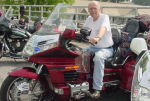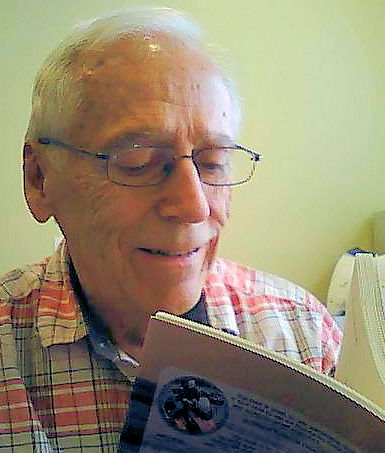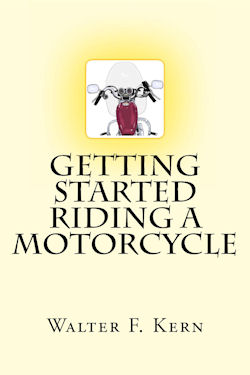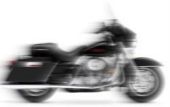An Unlikely History of Motorcycles April 1, 2005 I seem to recall being asked by the American Motorcycle Alliance (AMA) to write a one-page article on the history of motorcycles. Of course, this subject could fill many libraries since the motorcycle has served as our society's main transportation for the past 100 years. This is my attempt to condense all this to a single page. It's hard to imagine how we would have developed as a world power without our motorcycles. The Harley-Davidson Motor Company, being our largest American company, is owed much credit for the standard of living we all have today. The founding of the Motor Company in 1903 occurred in the same year that many great inventions were introduced including crayons, the bottle making machine, windshield wipers, and the Wright brothers first gas motored and manned airplane. Of course, the Harley-Davidson motorcycle was the greatest invention of all. In 1908, a Harley sold for $210. Mr. Henry Ford, an early automobile manufacturer, sold his popular Model T in 1908 for $950. Thus, the Harley motorcycle provided transportation at a much more affordable price. In 1913, there was talk that Henry Ford was onto some new method of mass producing cars that would lead to a great reduction in price of the Model T. Some said it could result in a price below that of Harley's motorcycle. As fate would have it, Ford got sick of the city life in 1913 and decided to move back to the country life where he was brought up and felt more comfortable. He was a friend of the Davidson brothers and he decided to sell his complete operation to Harley-Davidson for enough money to finance his retirement. I guess we'll never know what Ford might have had up his sleeve for 1914. With Ford's retirement, the Harley-Davidson Motor Company grew faster than it ever imagined. It quickly took over much of the available building space in Milwaukee. It hired all the Ford engineers and most of the engineers from competing automobile and motorcycle companies. America would henceforth grow using the transportation of the motorcycle. Some of the ex-Ford engineers decided to use Ford's manufacturing methods and created an assembly line capable of turning out one motorcycle every 24 seconds. Harley-Davidson quickly patented the whole process thereby keeping other manufacturers from competing with them. After that, most car and motorcycle companies fell by the wayside as Harley-Davidson expanded its empire and influence. Motorcycles had to adapt somewhat to be able to accommodate the American family. The sidecar was fitted to more than 60 percent of all new motorcycles. Special enclosures were developed to seal out bad weather. Roads began to improve to provide fast transit for the millions of motorcycles that were coming off the assembly lines in Milwaukee. The roads were built with widths just eight inches wider on each side of a complete sidecar rig. For bigger families, a tandem sidecar was produced that was rigidly affixed to the motorcycle. Suspensions developed that allowed the bike to lean around corners while the sidecar leaned with it. There were still many solo motorcycle riders. There was some concern about safety and riding in bad weather. The government stepped in and passed many laws to mandate special protective riding apparel and crash resistant motorcycles. Change to:
During wartime, domestic motorcycle production was cut back favoring military vehicles. The Harley-Davidson airplane became a potent force in winning the War with Europe in 1948-1952. President Davidson was president of the United States during that war. There was a slight scandal in 1949 when he was caught spooning with an intern in a sidecar near the Washington Monument. After the War with Europe, Howard Hughes was hired to expand the Harley airplane. He found ways to build a giant Harley airplane made out of wood. Detractors called it the Spruce HOG (Harley Or Goose?). That idea didn't fly and Hughes helped the Motor Company figure out how to turn milk into urine. They used the urine to make special ointment to put in the Harley first aid kits in case any riders got bitten by Jellyfish while riding on the beach at the Daytona Rally. By the early '80s, an upstart dropout from Harvard, Bill Gates, had built an experimental computer operating system he called DOS. Having no funding, he approached Willie G. Davidson for backing. Willie G. immediately saw the benefits of the new operating system to control all the proposed fuel injection modules Harley had planned for its motorcycles. He offered Gates one million dollars for the operating system patents and bought him out on the spot. Gates decided to return to Harvard where he became a full professor in Ancient Civilizations. Willie G. renamed the operating system as the HOG OS and created a new company to market it called MicroHOG. We all know how big that company is today. It produces 99 percent of all the computers and operating systems in the world and has provided all the hardware/software modules for every space mission. Now, when you buy a Harley, you get a computer as a bonus. The computer is linked to an orbiting system of Harley satellites that send and receive signals to every motorcycle in the world. The Motor Company has complete control of the transportation system now by being able to monitor the location of every motorcycle. Today, every house has a three-motorcycle garage. Every family has a motorcycle rig with as many as three seats in tandem. The motorcycle part of the rig has an enclosed sealed canopy for winter use. The canopy and sidecar are completely sound insulated with full airbags. The bike itself has an integral airbag and safety monitoring system. The Harley satellites are continuously monitoring every motorcycle for any safety violations. Upon receipt of any impending-accident signal from a bike, the GPS monitor sends distress signals to local law enforcement and ambulance services. Harley calls it the HOG-Star system. Highway monitors keep track of all vehicles and the state-of-the-art Motorcycle Movement System (MMS) allows for hands-free operation of sidecar rigs by depressing a single button on the motorcycle dashboard. Riders can still travel the roads using their own abilities but for long distance travel or other city-to-city travel, the bikes have the option to hook-up to MMS for automatic hands-free operation. In 2005, the AMA has 200,000,000 members in the United States. In addition to controlling all aspects of the United States Transportation System (USTS), they provide motorcycle roadside services in case of breakdowns or dead batteries. They also plan road trips. The AMA is a subsidiary of Harley-Davidson. The Motor Company produces exceptionally reliable and quiet engines. There have been some inquiries from Japanese manufacturers trying to market their Hondas and Yamahas here but the import tariffs are so high that no outside company wants to sell here. It's probably a good thing since most of these foreign bikes have loud exhausts and are always breaking down on the European highways. On our Motorcycles forums, we hear members from Europe wishing that they could purchase one of our Harley machines. Unfortunately, exports of Harleys are not allowed. There is so much USA demand that production is now done in 88 plants scattered across the country running three shifts a day. Since the turn of the new century, Harley-Davidson has been slowly studying hydrogen fuel cell engines. Some hybrid motorcycles are also being studied that would use electric motors in addition to the regular V-Twin engines we have all come to know so well. Even the schools offer courses taught by Harley specialists in how to get ready for these new motorcycle technologies. There is no need for any journalists to report on new Harley motorcycles. Harleys are readily available at reasonable prices from Wal-Mart stores. Repairs are minimal. When something does go wrong, a simple call to Wal-Mart brings a truck out to pick up the bike. They do the repairs and return the bike the next morning. The repair cost is automatically subtracted from your Wal-Mart paycheck. Sometimes they even throw in a new toaster as a good will gesture. Since almost everyone works either for Harley-Davidson (to provide for all your transportation needs) or Wal-Mart (to handle the rest), it makes for a great 2-company society.
"Walt ... Walt ... Wake up! ... You were mumbling something about hydrogen motorcycles and President Davidson with an intern. Have you fallen asleep watching Desperate Housewives again?" "What? ... Oh my God, what a nightmare! I thought I was in a parallel universe there for a minute ... I guess it was just a bad April Fool's dream." ~Walter Kern . . . . . . . All my April Fools' articles:
|
||||||||||||||
© 2008 Walter F. Kern. All rights reserved.
|
||||||||||||||
| You CAN Ride a Bike |
| 10 Ways to Be Safe |
| Latest Pictures |
 |
| Pictures of the Week |








 The latest models produced by Harley-Davidson are the EL Knucklehead, the FLH, and the Sportster 883, that have stood the test of time since their introduction more than 50 years ago. Of course, they each come with a variety of sidecar rigs at higher cost. The new hydrogen fuel cell models are expected to be introduced sometime in the next century ...
The latest models produced by Harley-Davidson are the EL Knucklehead, the FLH, and the Sportster 883, that have stood the test of time since their introduction more than 50 years ago. Of course, they each come with a variety of sidecar rigs at higher cost. The new hydrogen fuel cell models are expected to be introduced sometime in the next century ... 


